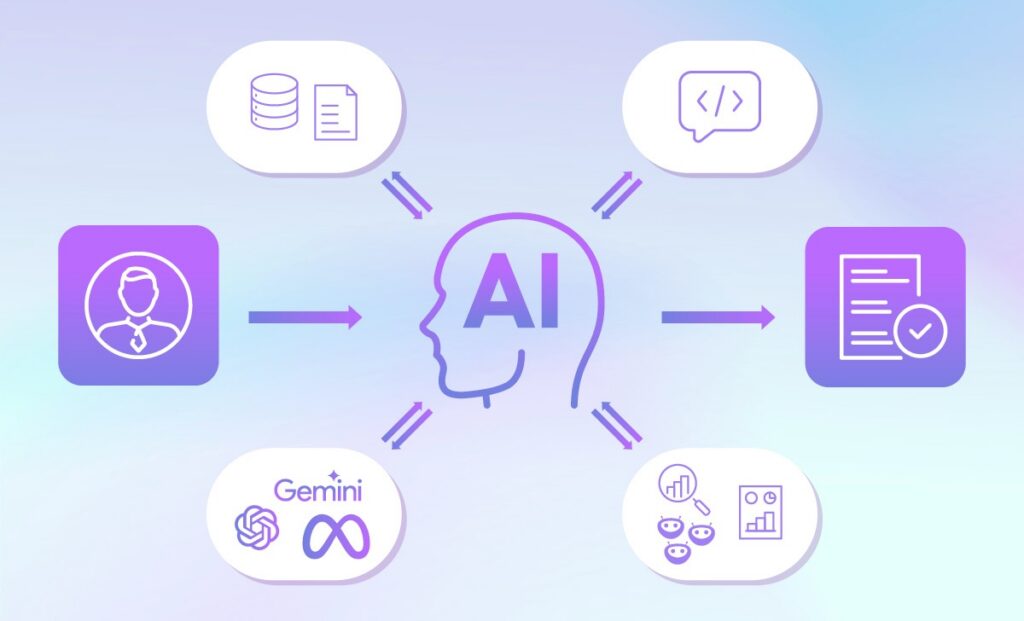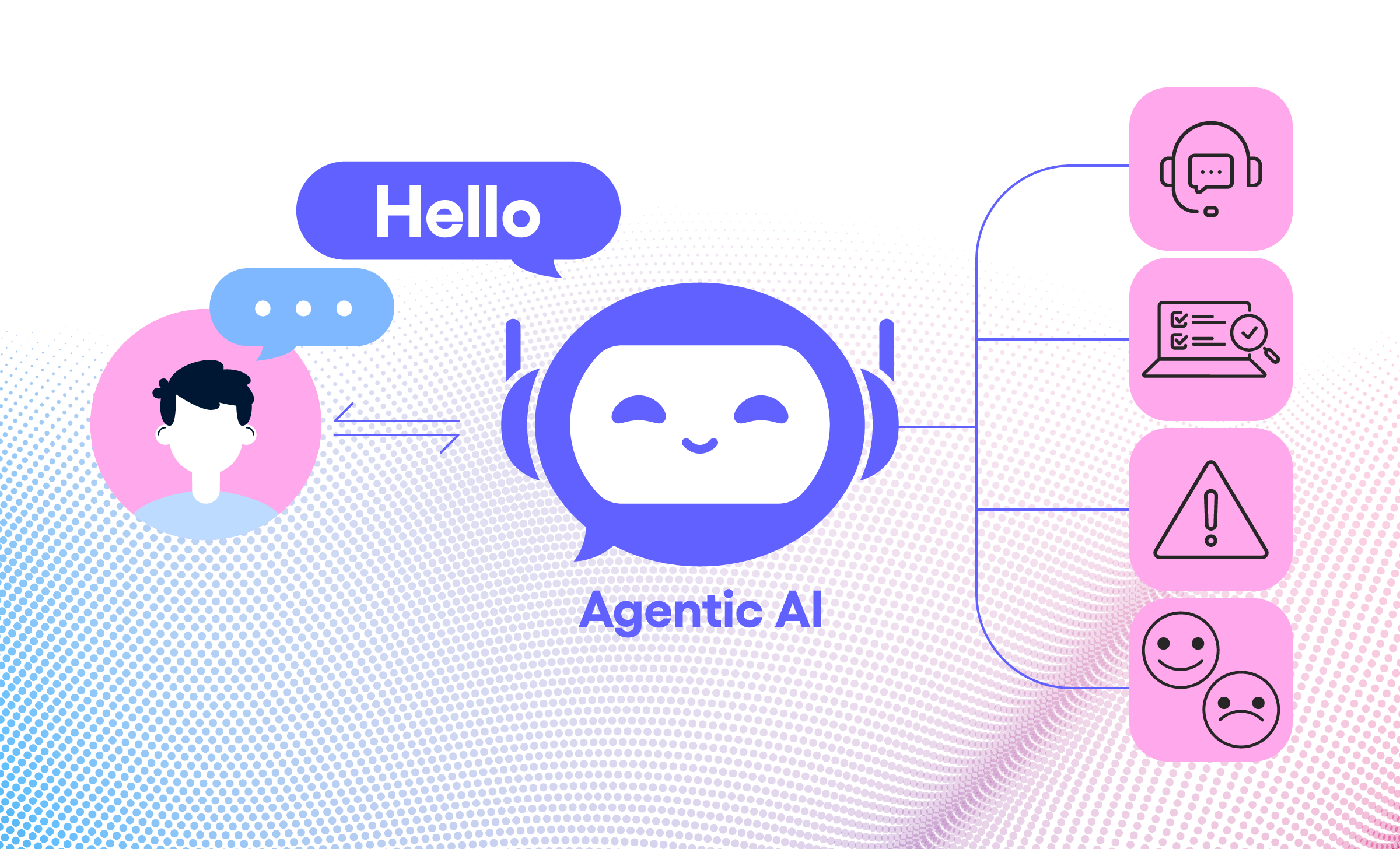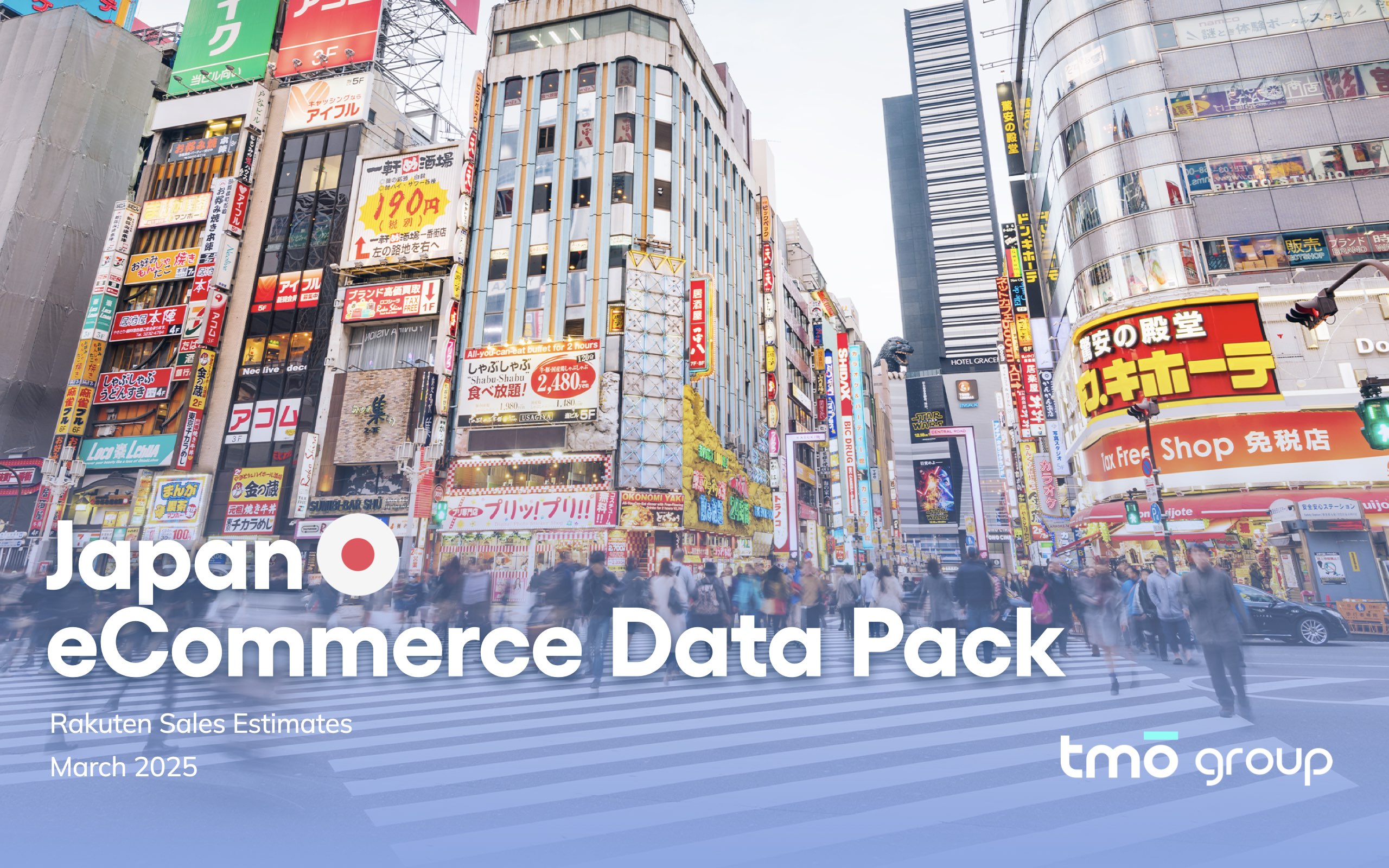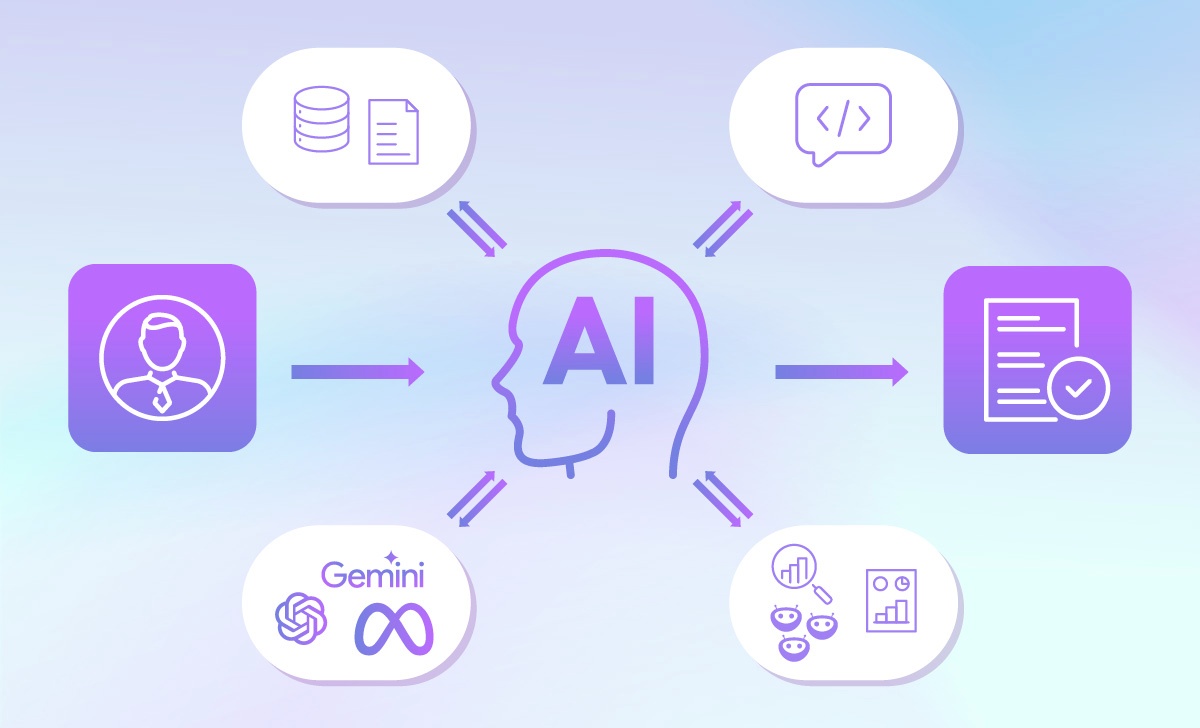Running an eCommerce operation means managing a long list of repetitive tasks: maintaining product catalogs, tracking inventory, optimizing for SEO, translating listings, fulfilling orders, and updating campaigns. As assortments grow and platforms multiply, these workflows become increasingly fragmented and resource-intensive.
AI tools are starting to change that. Systems like ChatGPT, Adobe Sensei, and platform-native extensions now generate product descriptions, adjust imagery, and automate catalog or campaign management. They’re already reducing the manual burden of day-to-day operations.
According to Shopify, 78% of organizations now use AI in at least one business function, and adoption is projected to significantly reduce operational costs for eCommerce businesses by 2030.
But AI maturity varies widely. Some brands use it as a manual assistant, others integrate it into automated workflows, and a growing few are experimenting with autonomous agents capable of reasoning across systems. This article outlines the four stages of AI adoption in eCommerce operations and 5 practical applications that show how AI is transforming how operations teams plan, execute, and scale.
TMO helps enterprises integrate AI into their operational core through Digital Transformation Solutions.
4 Stages of AI for eCommerce Operations
The maturity of AI in eCommerce can be mapped as a gradual shift in how intelligence interacts with business logic; from isolated creation to coordinated reasoning. Each stage reflects a distinct relationship between humans, data, and automation:
| Stage | Core Function | Example |
|---|---|---|
| Generative AI | Creates or enriches unstructured and structured data. | Product copywriting, image generation, attribute completion. |
| AI Workflows | Automates predefined, rule-based tasks. | SKU publication, order confirmations, scheduled stock updates. |
| Agentic Workflows | Coordinates multiple AI components with contextual logic. | Smart fulfillment routing, adaptive campaign scheduling. |
| AI Agents | Pursues defined goals through reasoning, planning, and feedback loops. | Dynamic pricing, predictive restocking, logistics optimization. |
Stage 1: Generative AI
AI first enters commerce as a creative accelerator. Teams use language and image models to generate product titles, copy, and marketing assets. It reduces effort but remains prompt-driven: every output still depends on human initiation.
Stage 2: AI Workflows
Automation scales horizontally through rule-based workflows. A new product triggers a chain: generate description, publish SKU, send confirmation. Each task runs reliably, but the logic is static. Decision-making still depends on predefined rules, making it useful for speed but limited for adaptability.
Stage 3: Agentic Workflows
Here, orchestration gains context. Workflows reference live variables like inventory velocity, forecasted demand, or campaign timing to determine what to do next. A fulfillment process might reprioritize orders automatically when a regional promotion increases volume. Intelligence begins to migrate from code to context.
Stage 4: AI Agents
The architecture shifts from process execution to autonomous reasoning. Agents interpret objectives (“maintain optimal stock turnover”), plan actions, coordinate with other agents or systems, and learn from outcomes. They operate within defined constraints like pricing rules, brand guidelines, or regulatory limits, but continuously refine their own decision logic.
Understanding AI Agents: How They Think, Act, and Create ValueLearn how AI agents work and how they can improve efficiency, scalability, and decision-making across your enterprise through intelligent automation.
Current State of AI Adoption
Most eCommerce organizations we’ve worked with operate between Stages 2 and 3: automated but not yet adaptive. Their systems execute reliably but still depend on human coordination to bridge silos. In practice, many who say they want an “AI agent” are actually looking for an agentic workflow: systems that reason contextually within defined parameters rather than act with full autonomy. This middle layer offers greater determinism, stability, and cost efficiency while still delivering significant operational lift.
Early pilots of Stage 4, particularly in pricing and logistics, are beginning to show how closed-loop feedback can generate measurable performance gains. The real opportunity lies not in adding more AI tools, but in designing architectures where intelligence operates as part of the system itself: structured, scalable, and continuously improving.
5 Use Cases of AI in eCommerce Operations
As AI continues to evolve from isolated tools into integrated systems, its impact in eCommerce becomes increasingly visible across the operational chain. The following five areas illustrate how top-performing retailers and brands are already adopting AI: some through embedded generative extensions, others through workflow automation or emerging agentic systems.
| Use Case | Common AI Implementation | How It’s Applied |
|---|---|---|
| Product Content Generation & Optimization | Embedded Gen AI | Drafts and refines SEO-ready titles, descriptions, and translations within Shopify Plus or Magento. |
| Marketing Copywriting & Campaign Execution | AI Workflows | Links CRM, analytics, and content tools to generate and schedule campaigns. |
| Inventory Planning & Supply Chain Optimization | Early Agents | Forecasts demand and triggers restocks through ERP or supplier integrations. |
| Order Fulfillment & Logistics Coordination | Agentic Workflows | Coordinates warehouses, couriers, and order systems for adaptive routing. |
| Pricing & Promotion Optimization | AI Agents | Continuously analyzes market and sales data to adjust pricing dynamically. |

a) Automated Product Content Generation & Optimization
Top eCommerce brands are integrating AI directly into their catalog workflows through platform extensions and headless CMS integrations. Embedded generative systems in Shopify Plus or Magento (Adobe Commerce) can automatically draft product titles, descriptions, and translations based on structured data and product imagery.
Teams can review, edit, and approve content in the same environment, accelerating time-to-listing while maintaining quality. Over time, performance data such as conversion rates and search performance feeds back into these systems, allowing AI to refine copy dynamically.
This approach is turning catalog maintenance into a continuous optimization process rather than a one-time setup.
b) Marketing Copywriting & Campaign Execution
Marketing teams are increasingly using AI to scale campaign creation without diluting brand voice.
Generative models embedded in CRM and email platforms can propose subject lines, ad copy variations, and creative prompts based on audience segments and prior performance.
Advanced workflows link analytics, scheduling, and content generation, allowing AI to suggest the best timing, tone, and channel mix for each campaign. Some brands are now connecting these tools with automation layers that execute micro-promotions in real time, freeing teams to focus on creative strategy and message testing.
The outcome is not less human creativity, but more space for it and supported by AI that handles the repetitive scaffolding of campaign execution.
c) Inventory Planning & Supply Chain Optimization
Retailers are applying AI to improve supply predictability and reduce waste across distribution networks. Predictive workflows embedded within ERP systems analyze sales velocity, seasonality, and supplier data to generate restock recommendations before shortages occur.
For mature teams, agentic systems go further, connecting with supplier APIs to issue or adjust purchase orders automatically based on lead times and demand shifts.
This creates a responsive loop where replenishment decisions are informed by live sales and logistics data, not static forecasts.
Such integrations are proving especially valuable during promotional periods, where inventory precision directly determines profitability.
d) Order Fulfillment & Logistics Coordination
AI is increasingly being used behind the scenes to enhance order accuracy and delivery performance. Fulfillment systems equipped with predictive models can flag potential bottlenecks, reroute shipments, or reprioritize orders by value, location, or delivery commitment.
Some enterprise operations are layering this with multi-agent orchestration, where AI systems overseeing inventory, courier selection, and customer updates communicate to resolve issues in real time.
The goal is not full automation, but intelligent responsiveness: anticipating disruptions such as courier delays or regional surges and adjusting routes or schedules automatically. This makes fulfillment networks more resilient without requiring constant human intervention.
e) Pricing & Promotion Optimization
Dynamic pricing has evolved from static rule sets into continuously learning systems.
AI-powered engines now consolidate competitor data, historical sales performance, and margin targets to recommend or apply pricing adjustments automatically across channels.
In more advanced architectures, AI can simulate promotional outcomes like testing elasticity, seasonal effects, and cross-category cannibalization before campaigns go live. This level of predictive control allows pricing teams to maintain competitiveness without eroding profitability.
For many enterprises, this marks the first true step toward autonomous decision systems where human oversight remains critical, but optimization happens in real time.
Steps to Building an Intelligent Operations Core
Building intelligent operations isn’t about deploying dozens of AI tools at once. It’s about layering automation deliberately by starting small, learning from outcomes, and connecting systems over time.
Based on patterns observed across mature eCommerce operations, a staged approach typically works best:
- Start with workflows, not agents: Use embedded AI or automation tools within existing platforms to handle routine tasks such as catalog updates, order notifications, or data tagging.
- Automate one process end to end: Choose a focused use case like content generation or restock alerts and make it fully automated before expanding scope.
- Link automations for context: Chain reliable workflows together so that catalog updates feed marketing triggers, and campaign data informs inventory planning.
- Track outcomes and refine: Establish feedback loops for accuracy, cost, and speed; use this insight to fine-tune models and thresholds.
- Add reasoning, not just rules: Once workflows run reliably, integrate agentic behavior into systems that can interpret goals, adjust priorities, and coordinate decisions across platforms.
By following this progression, enterprises can build a foundation of dependable automation that gradually becomes adaptive. AI maturity, in practice, is less about technological ambition and more about operational discipline connecting what already works before attempting what thinks for itself.
Scaling AI in eCommerce Operations with TMO
The evolution of AI in eCommerce operations is ultimately architectural. The path from generative tools to intelligent agents is more about rethinking how systems interact, share context, and make decisions rather than adding AI tools into your existing stack.
This four stages of adoption describe a progression in structure and intent, with each expanding the role of intelligence within the enterprise, moving from isolated task execution toward goal-driven reasoning across the organization.
To explore how AI can be integrated into your workflows based on your organization’s current level of maturity, contact TMO to start a tailored conversation.














